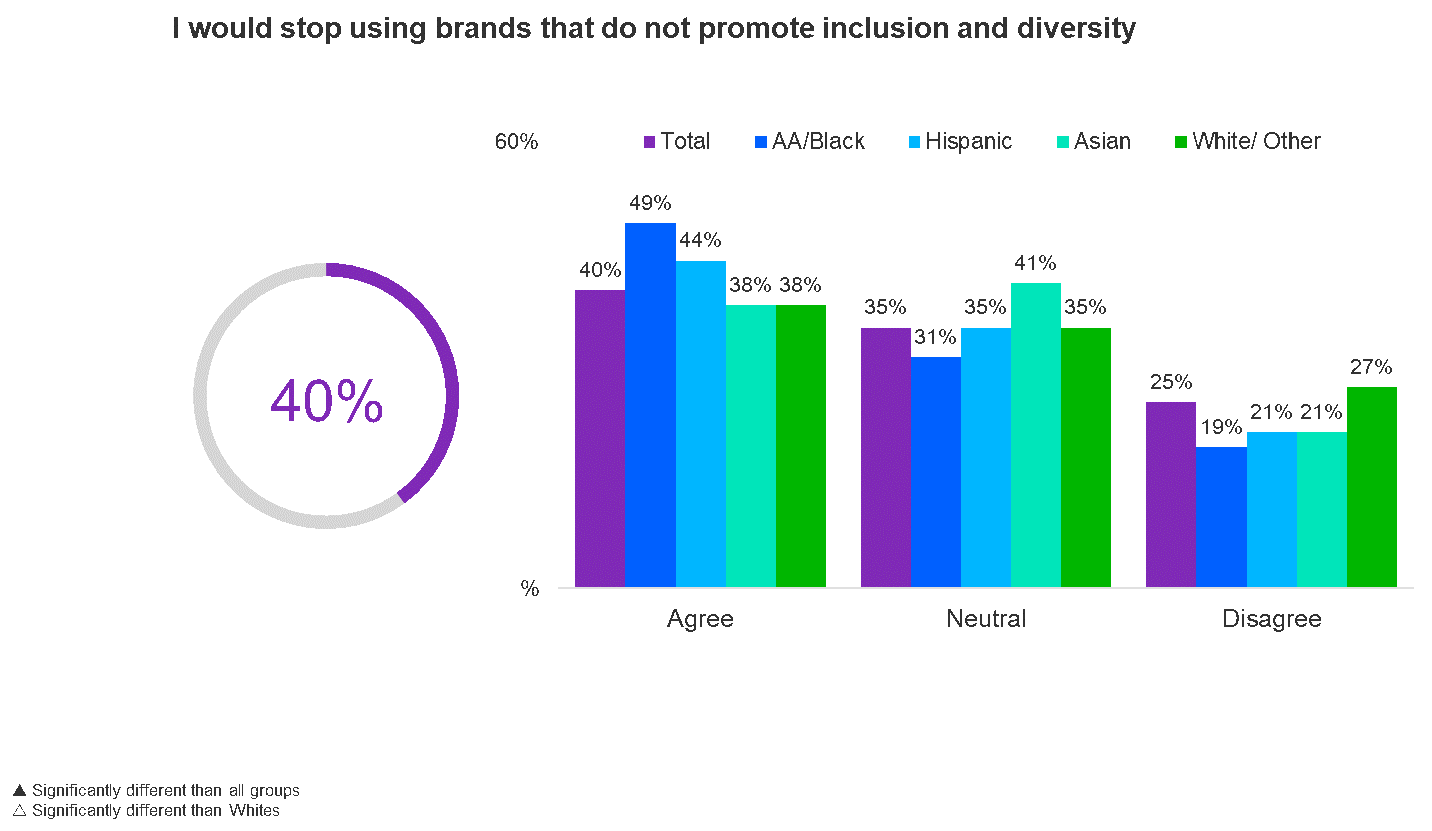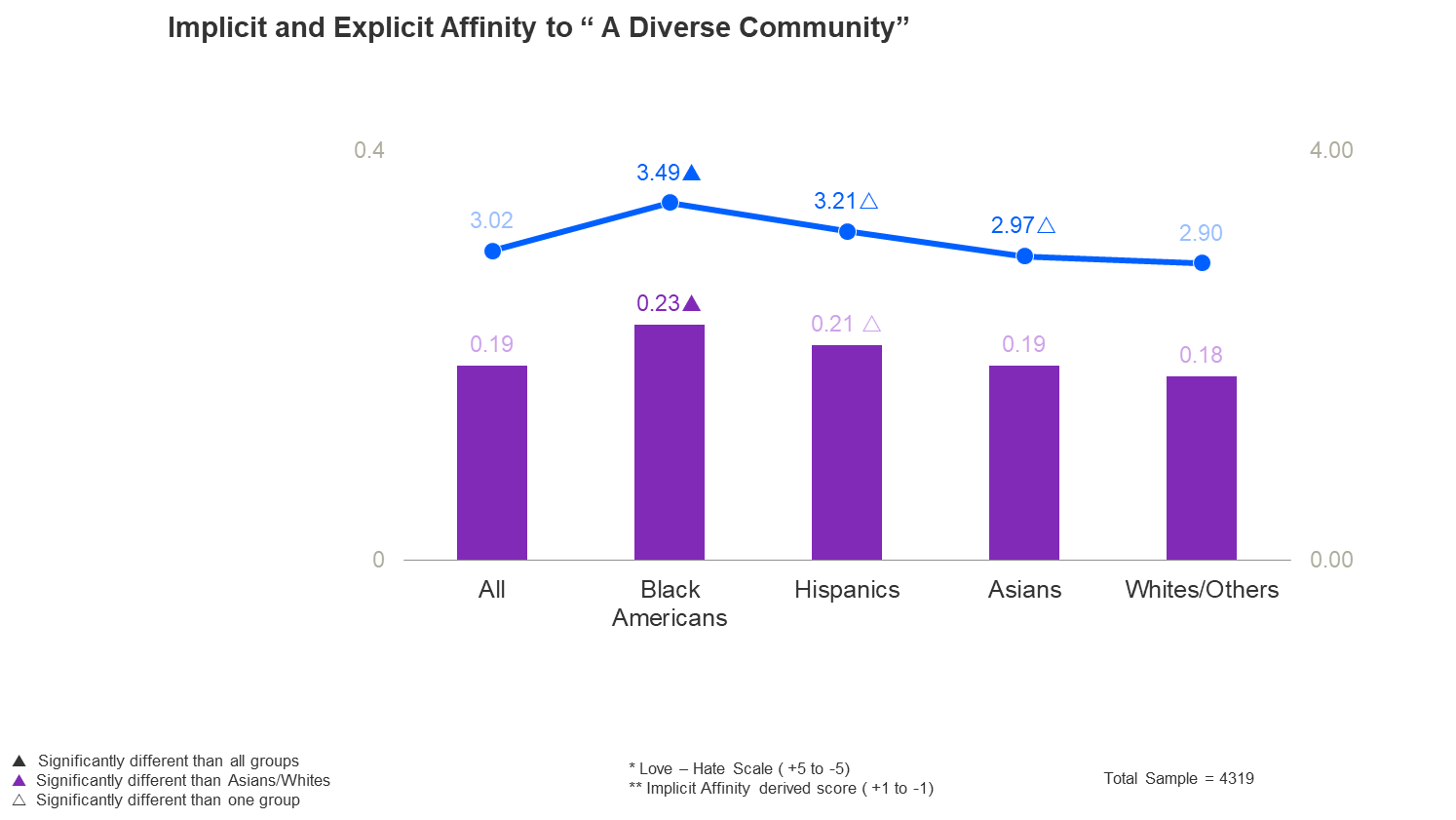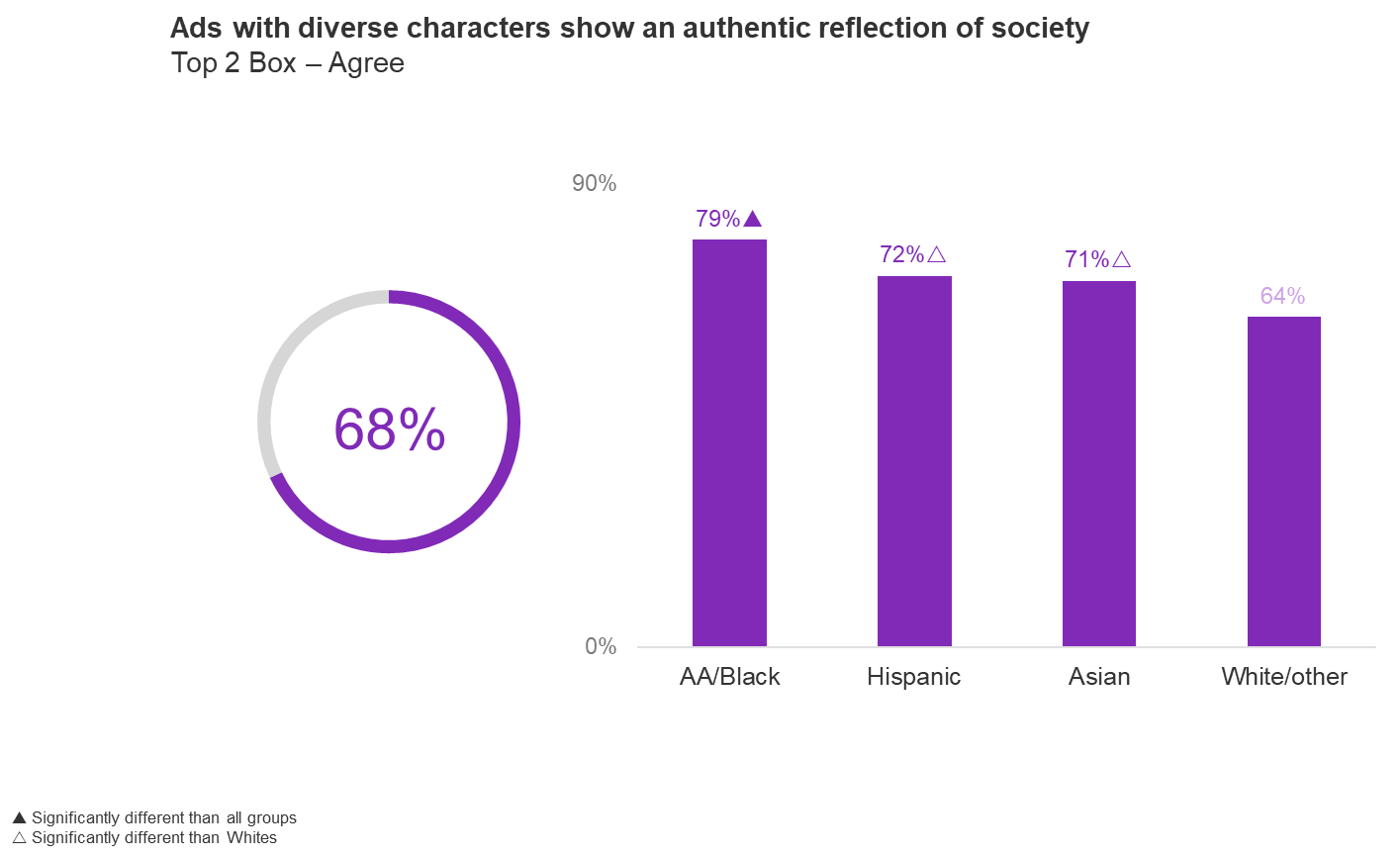Consumers are increasingly looking to brands to be champions of change on matters of equality and representation. Getting diversity and inclusion right in advertising matters more than you think. Our research shows 52% of all consumers "trust a brand more if their ads reflect my culture." For brands, demonstrating inclusion and diversity in advertising is imperative.
But why is diversity and inclusion important for brand success and how can brands successfully connect with consumers within diverse communities through advertising?
Why is diversity and inclusion important?
Racial diversity in advertising is no longer simply a moral imperative, it also makes business sense. But are brands doing enough?
Today’s consumers have great expectations. They want brands to go further with how they engage with different and diverse communities, from product development to advertising campaigns. They are also looking to brands to be change agents in socio-political dialogues, a dynamic that has been flipped on its head over the last decade.
Data show that inclusion and racial diversity in advertising is proven to drive return on investment. Inclusive advertising isn’t only socially and morally right, but failing to promote diversity will hurt your brand’s ROI. Our research shows that 40% of consumers “would stop using brands that do not promote inclusion and diversity.” Those percentages are higher among consumers identifying as Black Americans or Hispanics.

Effective utilization of inclusion and diversity is also visible in data surrounding long-term sales. Inclusive advertising is shown to positively impact short-term sales and longer-term brand-building.
However, while representation in advertising hovers around 50%, it is clear from our databases that including underrepresented groups in ads on its own isn't enough to drive sales. In fact, advertising campaigns featuring under-represented groups have almost identical short-term sales likelihood and contribution on long-term brand equity to the average.
Instead, the key to success is showing underrepresented groups in a positive way. When we look at ads that feature underrepresented groups in a positive way, there is a huge difference in the potential to influence short-term sales and build brands in the long term.
How diversity in advertising affects sales
| Short-term sales likelihood | Long-term impact - brand equity/power | |
| Ads showing under-represented groups | +1 | -1 |
| Ads showing under-represented groups in a positive way | +23 | +45 |
How to connect with consumers within diverse communities
In order to get to the bottom of what it is that helps drive positive impact when it comes to inclusion and diversity in advertising, we assessed the reasons for success – and failure – of ads.
We leveraged five analytical tools: Link (a copy testing solution) and neuroscience-based tools, emotional priming (implicit affinity), facial coding, eye tracking, and intuitive associations to uncover consumers’ implicit and explicit views on diversity in advertising. The study also looked at how to better understand the differences between single race versus multi-racial and diverse ads by diverse audiences: Black Americans, Hispanics, Asians, and whites. Here's what we found.
Deep emotions drive behavior
Emotional engagement is important in building advertising that resonates. Our research measured implicit and explicit emotions towards the notion of “a diverse community.” Our data revealed that people of color loved the idea of a “diverse community” more compared to whites, with Black Americans feeling the strongest. At a deep subconscious level, data surrounding Implicit Affinity showed a similar trend for Black Americans and Hispanics.

These deep emotions drive behavior. 68% of consumers feel the need for more racial representation in advertising campaigns, believing that ads with diverse characters show an authentic reflection of society. This percentage jumps significantly higher among people of color, a pattern similar to how they felt about diversity in the previous chart.

True representation relates to how ‘seen’ diverse audiences feel, and how relatable the stories we tell in our advertising are.
While there are many ways to represent these audiences, when we analyze the dynamics that define top performing ads that are diverse and inclusive, we can identify three key features that make them stand out above the rest.
Three ways for advertisers to better connect with consumers within diverse communities
1. Inclusive casting
Inclusive casting is about taking representation in advertising further than just ticking the box because you have certain demographics featured in your ad. Truly inclusive advertising casting features central characters from underrepresented groups without the story typecasting, or overly centering around, their identity. Instead, identity is celebrated in ways that are authentic and appropriate. We define inclusive casting as going beyond presence by ensuring that underrepresented groups play a central role in a brand story that isn’t focused on inclusion and diversity as a topic.
As an example, Bounty paper towels created three ads targeting a unique demography with the intention to be inclusive for each – one ad with an Asian family, another ad with a Black American family, and the third ad with a white family. Each ad was focused on a universal theme of family bonding playing on light humor.
Kantar analysis found all ads were seen as impactful (70+ percentile). At an implicit level, facial coding data showed that all ads had a moderate level of emotional engagement (55-70 percentile). The Asian and Black American family ads were considered “modern and progressive” for society (Diversity Index of 60-70), though, that was not the case for the ad with the white family. The Asian and Black American ads were also spontaneously associated as” inclusive” or “diverse.”
Another interesting finding was that Asians liked the ads with Asians family more than whites, while Black Americans and Hispanics liked the Black American ad more than whites. They all liked the positive portrayal of the cast and the family bonding shown among them. However, the white demography did not enjoy the ad with the white casting. The white audience could not relate to the theme and also commented on the negative portrayal of the cast.
The data suggests that people of color find the ad inclusive when they show people of color, regardless of the race being shown. Single-race ads or multi-racial ads have the power to drive impact across all races, provided the theme is relatable and authentic.
2. Celebrating culture
Authenticity is a big dynamic when it comes to positive representation in advertising. Accurately celebrating group cultures, or shared cultural themes that connect organically to the brand or product being displayed, is one way to use culture in positive representation. The key is to illustrate the brand message through a story centered around culture that naturally connects. It’s also important to remember your wider audience as well, and choose universal themes within these cultures, such as celebrations and family gatherings.
Uber’s “15+1” ad is a great example of using the universal theme of birthday celebrations and connects to the global sentiment that COVID-19 halted traditions. The ad is colorful, features lively, culturally appropriate music, and portrays happy people from a variety of backgrounds gathering to celebrate.
The ad performed well, with it being seen as progressive for society (with an Index score of 74) and having a positive impact on those underrepresented in advertising. It was also shown to be universally enjoyable across all demography. Moreover, spontaneous associations of the ad were all positive and it was considered “inclusive” at an implicit level.
However, advertisers need to exercise some caution and try and show as authentic a representation of culture as possible. We also saw some negative reactions at an implicit level among Hispanics who found the ad “unreal” and “unrelatable.” For some it was “over the top.”
3. Diversity as a way of life
The third approach to better connect with diverse communities through representation in advertising is by showing diversity as a way of life. This involves showing multi-racial families or various demographics dealing with everyday issues that we can all connect to. It is also part “normalization,” showcasing diverse communities and a vision for how we all interact. This can be done by illustrating the brand message while showing the human experience through a diverse community. Another option is to choose central characters from a diverse group and center the story around them, while having them navigate themes we can all relate to such as the first day of school or tender family moments.
A strong example of this is this campaign from Instacart. The ad features an interracial couple who are trying to get some rest while their baby is asleep, using Instacart to order their groceries. The ad was impactful ( 70+ percentile), emotionally engaging ( 80+ percentile), and the most enjoyable ads across all demographics, with the relatability of the couple’s situation being a key element of this enjoyment.
The chemistry between the couple was also liked a lot. We saw ‘united’ as a spontaneous association at a salient level, instead of inclusive or diverse. This example again shows the power of authentic and relatable storytelling: their race wasn’t the focus of the ad, it was their situation as new parents, something that transcends race.
Inclusion and racial diversity in advertising is not only morally the right option, but it is essential for modern brands to thrive. Get in touch to see how our brand and experts can help you optimize your brand’s messaging and learn more in our webinar “Inclusion and Diversity – Diverse Reactions to Inclusive Advertising.”

